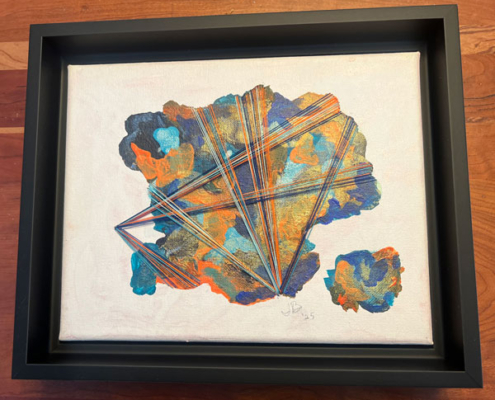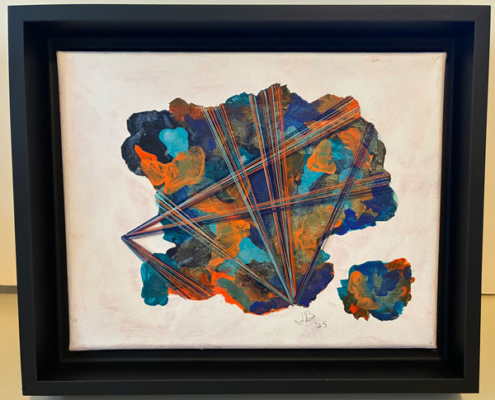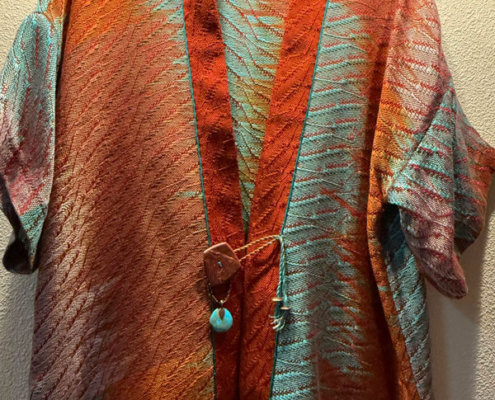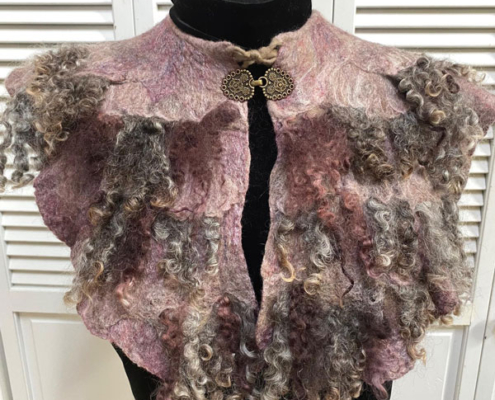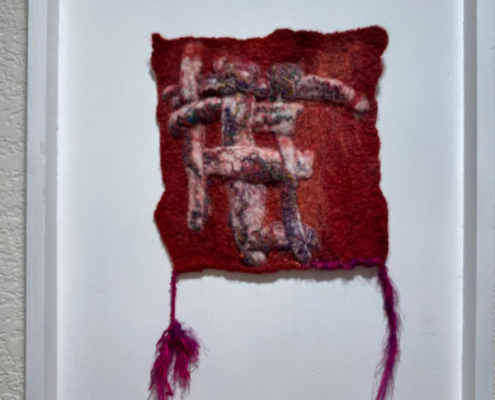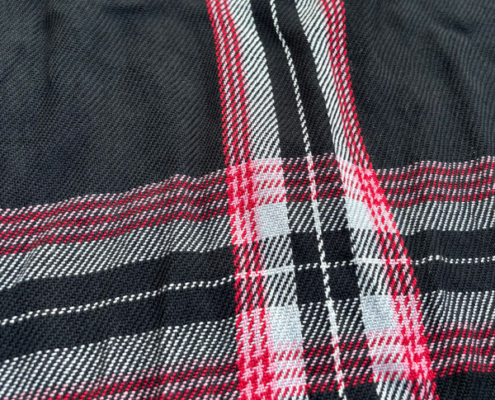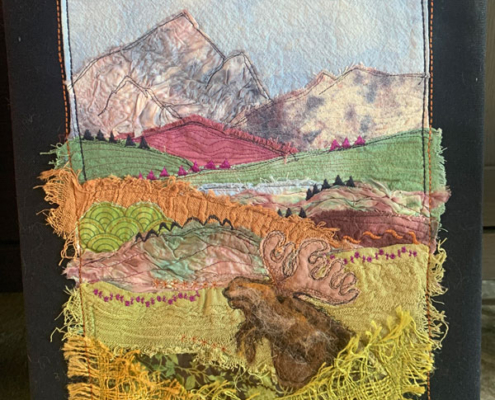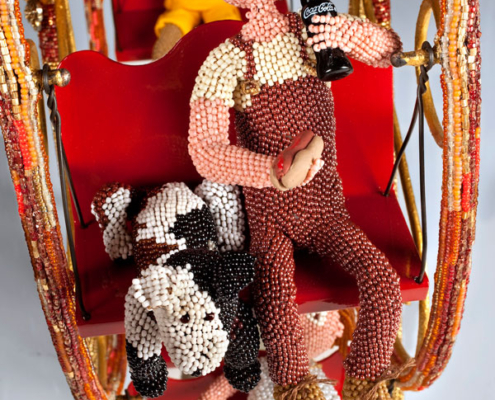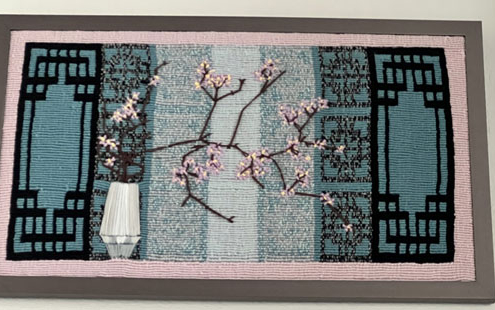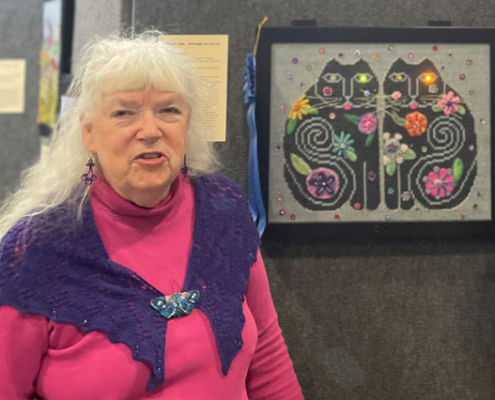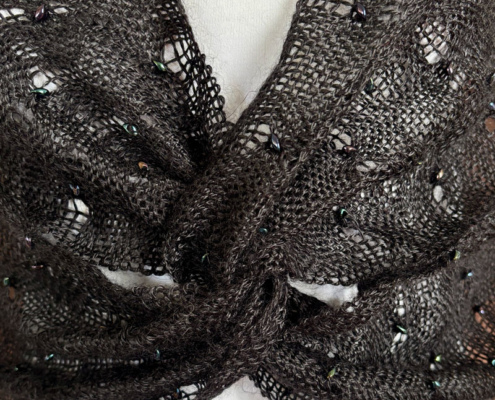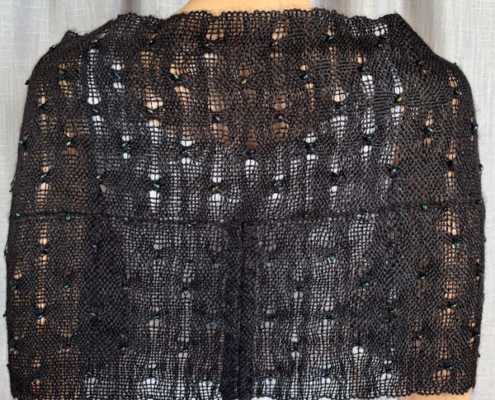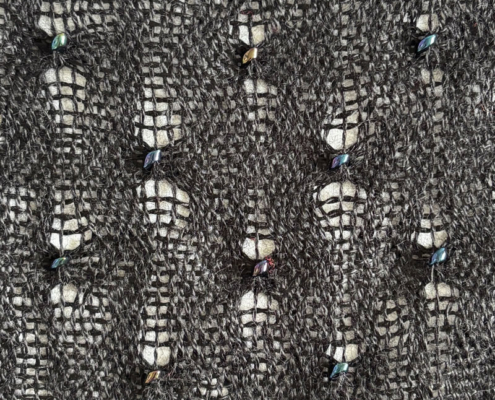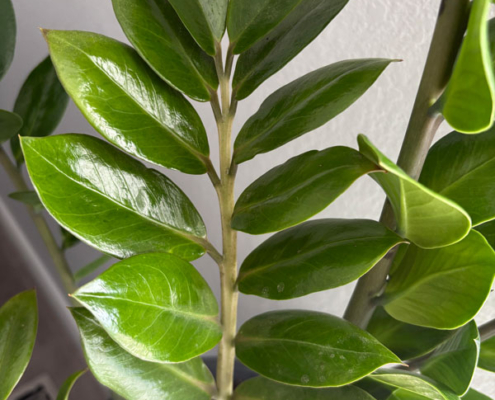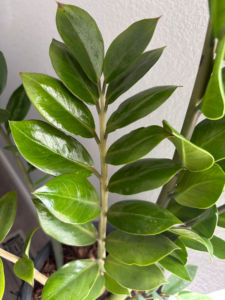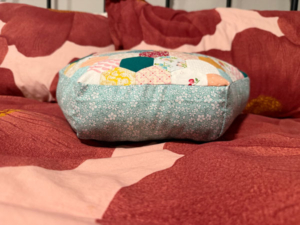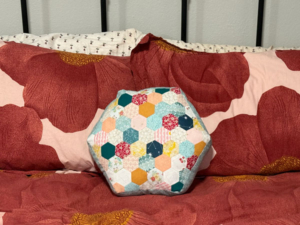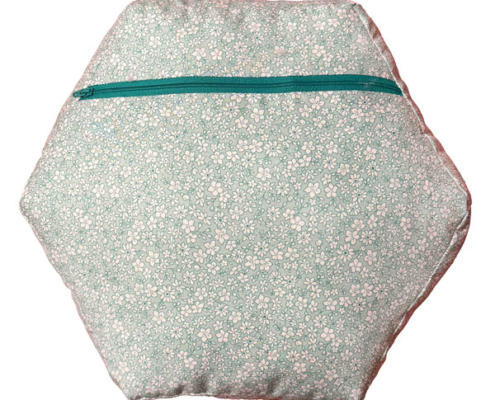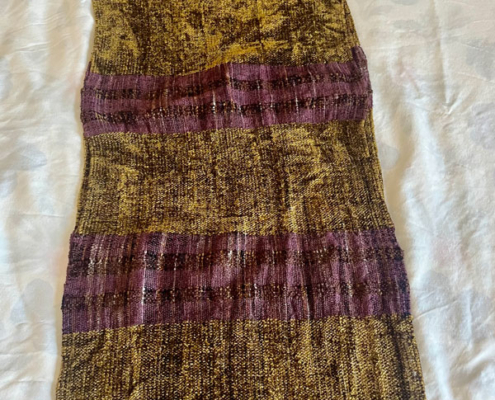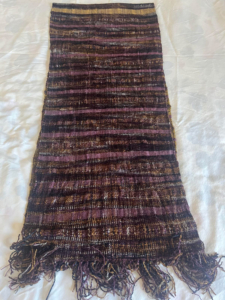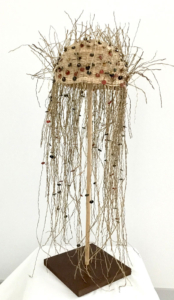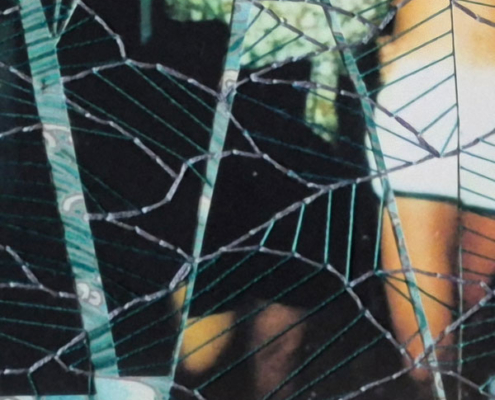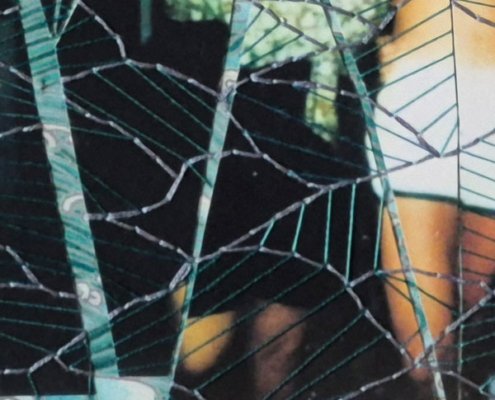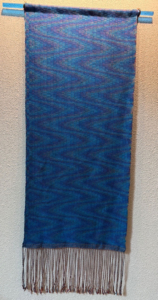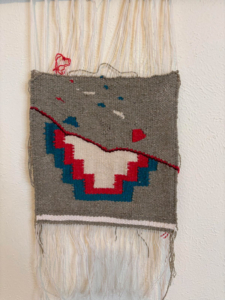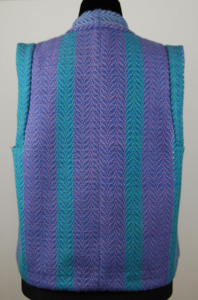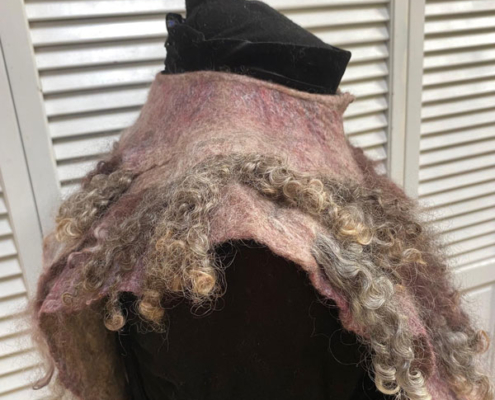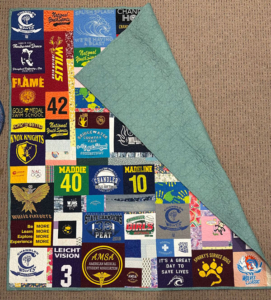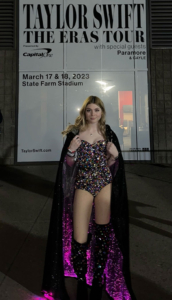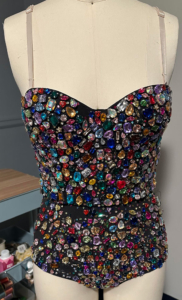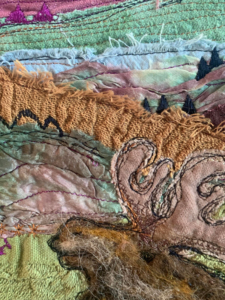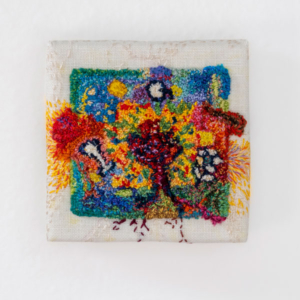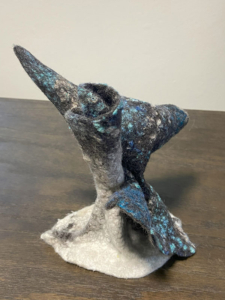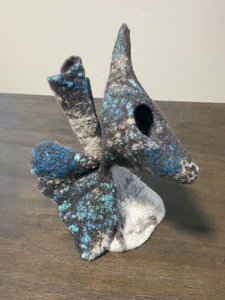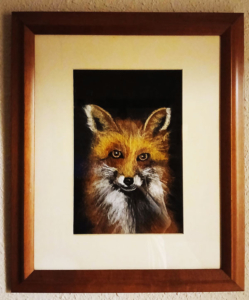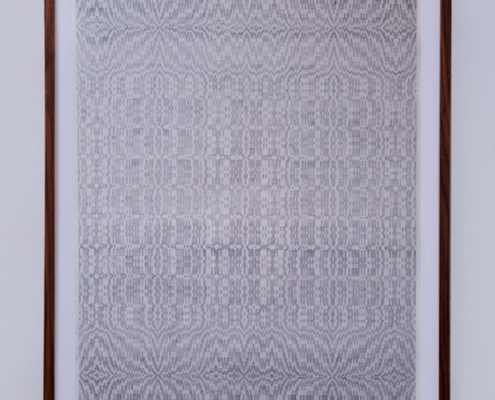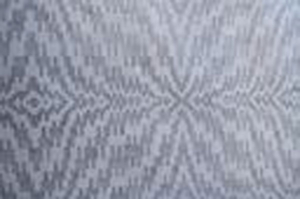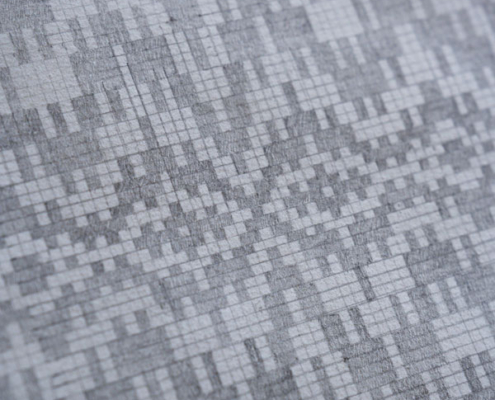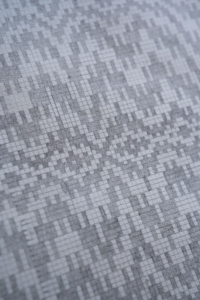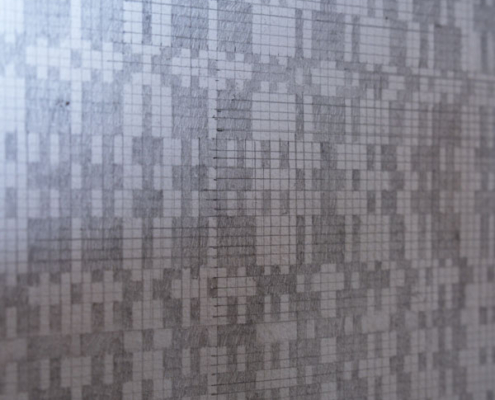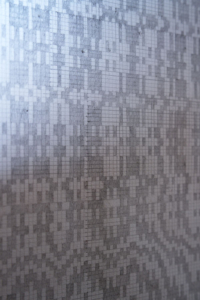2025 HGB Show & Sale Showcase
Artistic Endeavors
The Juror’s Choice award announced at the Member Reception – October 28, 2025
The People’s Choice Award announced at the Show & Sale – November 2, 2025
- 2025 Showcase Theme: Artistic Endeavors
The pursuit of artistry through the medium of fiber is an ever-evolving journey. Each piece reflects not simply technique, but an emotional and creative investment in the process.Magic can be found in the tactile engagement while weaving, knitting, crocheting, or stitching, inspiring a meditative energy, pulling the artist into a place of reflection, exploration, and expression.Artists are asked to lead the viewer through the artistic endeavor involved in their submitted pieces.
- What was your inspiration?
- Why or how, do you think, did that inspiration evolve into an idea for a piece of fiber art?
- At what point did you feel the piece was complete?
- Is the idea complete?
Juror: Sara Goldenberg White
Showcase Co-Managers: Denise Perreault and Jane McAtee
Juror’s Choice Award
Joanne George
Floral Cats – Homage to Laurel Burch
Artist Statement
What was your inspiration?
I have long been a fan of the artwork of Laurel Burch, in particular her images of cats.
Why or how, do you think, did that inspiration evolve into an idea for a piece of fiber art?
Having a drawloom – a loom that is particularly suited to creating images – I decided I would put it to use to create whimsical cats with flowers. Some of the things Laurel Burch was known for (and I particularly like) are the bright colors and gold outlines. Therefore, the black cats on a grey background obviously needed generous additions of color and sparkle. This was accomplished first with needle felting flowers and leaves into the woven fabric, and then using generous amounts of metallic threads, beads and sequins for further embellishment. As it happened, at the same time, I was participating in a study group using electronics with our fiber creations. So I was inspired to add an interactive element, with a proximity sensor that may cause the cats to purr or emit a quick meow. Lighted eyes and glittered whiskers were the final touch.
At what point did you feel the piece was complete?
When it was ready to hang on the wall.
Is the idea complete?
Yes, though I am still interested in doing more Laurel Burch inspired items.
Materials and Techniques used: Handwoven on a drawloom with tencel yarn. Embellishments: needle felting with wool fleece and embroidery with metallic threads, beads and sequins. Also electronic components, including a Sparkfun Arduino that I programmed.
20″ x 16″ x 2″
People’s Choice Award
Sue Torfin
Foxy Friend
Artist Statement: When a friend of mine offered me this frame from her recently deceased brother’s estate, I intended to fill it with an image that enhanced the frame and would be appealing to my friend, and then to return it to her as a gift.
I thought this lovely fox would do the trick. The entire image was created by needle felting with died wool roving into a piece of syntheric felt that kept it from shrinking when wet felted as a last step in the process. When I could see the fox’s eyes looking back at me as if alive and truly seeing me, I knew he was complete and worth living with. I knew I would delight in gifting it back to my friend.
Materials and Techniques used: I used died wool roving needle felted into a piece of synthetic felt. It was briefly wet felted before putting it in the wood frame behind glass.
24″ x 20″
Participating Artists
Jeanne Abel | Jude Biggs | Ruth Briggs | Emma Browning | Al Canner | Teresa Coons | Liliana Crespi | Linda Farrelly | Sondra Finch| Sally Fortenberry | Beth Fowler | Joanne George | Linda Grey | Barbara Herrli | Alice Ierley | Kaye Iverson | Karen Krause| Kaitrin Kuchera | Jane McAtee | Heide Murray | Madeline Nunn | Amy Blythe Oien | Jane Patrick | Denise Perreault | Star Rader | Cindy Sales | Kristin Taylor | Sue Torfin | Clarke Waskowitz
Jeanne Abel
Woven, beaded Pinky Swear Wrap
Artist Statement: I love to incorporate beads in my creations, but I don’t like stringing hundreds. To avoid that, I’m always looking for techniques to add them as you work (weave, knit, spin, etc.). I figured this one out while weaving a long strip, destined to be twisted into a “Pinky Swear” (one of my twisted knitted designs … but you can’t weave in the round with a twist!). At regular intervals in mid pick, a bead is slipped onto a loop of the weft yarn which is kind of knotted around a few warp threads. The beads don’t move, and they haven’t been dragged along yards and yards of yarn. This yarn is Wagtail’s Mohair from Australia. It has a nice tight twist, so it doesn’t worm-out and is very soft. The beads are iridescent parallelogram seed beads from sometime in the past. Just a lovely combination!!
Materials and Techniques: Wagtail Yarns 100% Fine Kid Mohair (warp & weft)
Glass iridescent parallelogram seed beads
Beaded plain weave on Schacht rigid heddle loom, 8 dent heddle
45″ circumference, 15″ long
Jeanne Abel
Zamia Poncholette in LGF Suri Sock yarn with Amethyst beads
Artist Statement: This lace pattern made a huge impression on me when I saw it in a commercial garment in a shop almost 10 years ago. After unsuccessfully hunting for the pattern in all of the usual knitting related places, I was determined to figure it out. It took a few years and some hair pulling but here it is! I’ve incorporated it into a few different garments. This little poncho is the latest, probably my favorite, and certainly not the last.
The yarn is LGF Suri Sock, 55% Suri Alpaca, 30% Wool, 15% nylon and beautiful. The Amethyst tube beads just work. The name Zamia was inspired by the “ZZ” plant (“Zamioculcas”) with its bold, almond shaped, slightly off-set leaves. My garden does inspire me and this “ZZ” is just one brilliant set of lines, in my opinion.
Materials and Techniques: LGF Suri Sock yarn: 55% Suri Alpaca, 30% Wool, 15% nylon
Amethyst tube beads
Lace knitting in the round on 4mm needles, shaped with dolman-style shoulder panels
22″ neck circumference, 72″ bottom circumference, 12″ long
Jude Biggs
Bursting
Artist Statement: In “Bursting,” I have tried to capture the sensation of watching a star burst, which is how I sometimes feel when working on a new painting. The colors of the star are bright and irregular, the arms of the star weave over and under each other, and the metallic sparkle throughout comes from a playful inner child who likes the Kaboom of an explosion. Artistic endeavors can feel like a star bursting. Ideas and images seem to come out fast from nowhere. An observer can see the mess created by the explosion but can also appreciate the process of turning the mess into a simple design.
How do I know when the picture is done? Maybe after realizing the mess has been cleaned up and turned into something (hopefully) that an observer finds simple and beautiful.
Materials and Techniques: watercolor and embroidery
8″ x 10″
Jude Biggs
Reaching Out
Artist Statement: “Reaching Out ” expresses what I have been learning after retiring from a 30-year profession: I’ve been developing an ease reaching out to others, an ability to play with color and shapes not knowing what a picture may end up looking like, and an attitude that sees mistakes as chances to learn. I believe these skills aid any artistic endeavor “but are especially helpful for a beginner.
How do I know when a piece is done? Somehow, it just feels done.
Materials and Techniques: acrylic and embroidery thread
8″ x 10”
Ruth Briggs
Q11
Artist Statement: This Fiber Art piece was inspired by a piece of pottery that I had created in the past. I am continuing a three dimensional design onto a two dimensional wall piece. This is completed and will be the beginning of a series.
Materials and Techniques: Cotton cloth painted with fabric dyes and acrylic ink pens. Dark buttons and extra strong upholstery thread were used as design elements. The piece was twice washed and color set. Quilted.
32.5″ x 40″
Ruth Briggs
Stormy Windows
Artist Statement: Starting each Fall the winds where I live can blow across the Front Range of the Rockies up to 80 mph and beyond. I sat at my window in such a storm. This was my inspiration for this Fiber Art. It could possibly be the first in a series about the wind. Completed: February 2025.
Materials and Techniques: Cotton fabric, Chinese pajama bottoms (synthetic), and cotton thread. Quilted.
39″ x 39″
Emma Browning
Wildflower Hexagon Cushion
Artist Statement: Before beginning this piece I took a class from Isabel Suhr on English Paper Piecing and found the process to be incredibly inspiring. After I finished the piece from the class I still wanted to explore the technique more, so I looked through my scraps and supplies and pulled together my favorite fabrics to begin working on paper pieced hexagons. I was very inspired by the simplicity of the shapes and rhythm of the stitching, so to contrast the repetition of shapes I chose bright, patterned fabrics. Initially I had no plan for the end product and sewed the pieces together in whatever way I found most pleasing. I often carried the project with me and worked on it in smaller chunks during my classes, which made the layout more random. As I worked I found myself more inspired to create something whole and complete rather than just pieces in order to showcase all of the work I had done and the joy it had given me to create. Once I created an even shape with all my previously made chunks I decided to make the piece into a circular pillow, but realized when cutting the edges that a hexagon would suit the shape I had created far better. I finally felt the piece was complete once I finished added the sides, backing, and stuffing and was able to see the piece as a dimensional object. My goal with this piece was to create something that sparks joy and feels playful and vibrant. I believe now that it is complete my idea for the project has been fulfilled and I am thoroughly happy with my work.
Materials and Techniques: Cotton, hand and machine sewn
13” x 12” x 3”
Al Canner
Color Notation
Artist Statement:The title of this piece derives from the placement of the colored beads, which suggest musical notation. I was inspired by my collection of wooden beads, found decades ago in a second-hand store and all these years waiting in their color-separated containers. I began by pinning down the perimeter shape onto a corkboard and then tying knots as I circumnavigated the shape, eventually “dropping” cords as I rounded the corners, causing the shape to flatten. Particularly challenging was the intersection of the two diagonals that cut across the rectangle. In the central portion, I decided to mimic the effect of the beads by inserting single knots of the various colors. The double half-hitch is used throughout, and the knots’ strength created and maintains the form.
Materials and Techniques: knotted cords of cotton and jute; wooden beads
34″ x 22.5″ x 4″
Al Canner
Dusk Rising
Artist Statement: In an earlier work that was intended to suggest the “eyes” found on the trunks of aspen trees, I had perfected the insertion of shapes constructed by knots tied perpendicularly to the main form, temporarily using as warp (the hidden cord around which the knots are tied) cords which had been serving as weft and introducing new colors via the temporary weft cords. I decided in this piece to have that feature as the defining element. This work began at the top with very little planned in advance. The idea of having occasional warp cords exposed at the edges was a serendipitous innovation that offered itself early in my two months of knotting this work. As with all my pieces, the humble double half-hitch is used throughout.
Materials and Techniques: knotted cords of cotton and polyester
19.5″ x 20″ x 1″
Teresa Coons
Wrapped in Chenille 1
Artist Statement: For me, weaving has always been more than an exercise in technique or the production of a product. It has been an exploration of fiber, texture, and color, and how they all interact within a structure. I strive, not necessarily, for perfection, but rather for what is pleasing to the senses — to the eye, and to the touch. Thus, in this piece, the luxury feel of chenille is blended with other fibers to create something unique, and maybe surprising. Is the piece complete? I suppose it is when it reaches a desired size, or I run out of warp, but each “completed” piece always leads to to the next “what if” question for how I will begin my next piece.
Materials and Techniques: Structure: woven plain weave
Yarns —
Warp: rayon chenille, silk, polyester
Weft: rayon chenille, silk, polyester, bamboo
15” x 68” – 3” fringe
Teresa Coons
Wrapped in Chenille 2
Artist Statement: For me, weaving has always been more than an exercise in technique or the production of a product. It has been an exploration of fiber, texture, and color, and how they all interact within a structure. I strive, not necessarily, for perfection, but rather for what is pleasing to the senses — to the eye, and to the touch. Thus, in this piece, the luxury feel of chenille is blended with other fibers to create something unique, and maybe surprising. Is the piece complete? I suppose it is when it reaches a desired size, or I run out of warp, but each “completed” piece always leads to to the next “what if” question for how I will begin my next piece.
Materials and Techniques: Structure: woven plain weave
Yarns —
Warp: rayon chenille, silk, polyester
Weft: rayon chenille, silk, polyester
15” x 76.5” + 3” fringe
Liliana Crespi
Copricapo
Artist Statement: I often feel the need of making objects. These objects are made with different kind of fibers using various fiber techniques. I want them soft and conducive to touch.
Working on a new project is always a surprise. I do not plan much. I let the material dictate the shape and this is exactly what happened with this piece.
Materials and Techniques: Seagrass, metal beads and rubber washers
Twining
30” x 8” x 8”
Liliana Crespi
You See What I See
Artist Statement: I moved to Colorado one year ago and one of the most amazing thing is the beautiful sunsets. Oranges and pinks above the aerial perspective of the Rocky Mountains. This is the view from my studio, I will never miss one.
Materials and Techniques: Woven tapestry. Cotton warp and cotton and wool weft
46” x 25”
Linda Farrelly
Sea of Memory
Artist Statement: I have been thinking about how memory changes and shifts over time, much like the seashore changes with the movements of the ocean. Using a piece of quilting cotton printed with abstract ocean waves as a base, I printed a personal photograph onto paper and cut it into pieces, fracturing it. I then used embroidery floss to stitch the paper to the cloth, imitating the wave movement with my stitches. Like a memory, most of it is visible but the connections sometimes shift, details move in and out of focus, and it dissolves into the sea, bit by bit.
Materials and Techniques: embroidery, collage – photo printed onto paper, quilting cotton, embroidery floss
14” x 14” x 1”
Sondra Finch
Serenity
Artist Statement: For this piece Serenity, I gradually added my cut pieces to create a solemn mood in this collage. I have always had a deep love for horses, and had the blessing to observe a magnificent herd in New Mexico in all their glory and high spirit! They provide nutrients for the native wild Prairie grasses and have great loyalty in their family groups. In my wall art piece, my intent was to capture the evening glow as the New Mexico sun was setting and depict the feeling of that hushed hour when the horses are calming down and the golden light casts a magical energy all around in the silence. May we find sustainable ways to let them roam and be free and keep a balance in their home lands to live in peace.
Materials and Techniques: I used cotton fabrics, cotton thread, cotton batting, acrylic paint. I use the fussy cutting technique to design and place the images, and paint for a few accents, then I quilt the piece. My background fabric I used depicting sunset is an ombre’ fabric. I then frame the piece onto artist stretcher bars which are kiln dried and will permanently hold shape. If you stand back a distance the quilt begins to look like a painting.
28″ bx 42″
Sondra Finch
Starry Aspen Night
Artist Statement: In Starry Aspen Night I wanted to depict the grandeur of the beautiful mountain starry night in the aspens under moonlight. It is a magical time when the whole landscape takes on a different light and activity of all the creatures enjoying the splendor. I cut the pieces I want then I gradually create a collage as I design the mood I wish to portray. I use acrylic paint for accents such as the branches and plants with snow. I then quilt it. I use kiln dried art stretcher bars, so it will permanently be in good shape. If you stand back a distance, the quilt begins to look like a painting.
Materials and Techniques: I used cotton fabrics, cotton batting, acrylic paint and cotton thread. The stretcher bars are kiln dried so will not warp.
21″ x 30″
Sally Fortenberry
Beads from the Past
Artist Statement: This necklace was inspired when another Guild member gave me an antique beaded bag. The lining was literally in rags & she was hopeful that I would be able to reuse the beads. As I spent several hours deconstructing the beadwork, I was imagining the necklace that they might become. There are many more beads to work with and I will know their purpose as I remove them from the bag in the future.
Materials and Techniques: Antique glass cut beads, Japanese glass beads, nylon thread.
22″ long
Beth Fowler
Ode to Susan
Artist Statement: For me, the colors of the Southwest begin with the reds and oranges of our sandstone bluffs, and end with the vibrant blues of our western skies. Hand dyed yarn that features this palette inspired me to craft a jacket as an ode to my friend and sewing mentor, Susan Igou. Susan was a Colorado girl. She loved hiking in mountains in all kinds of weather. Nature inspired her spirituality. She was deeply committed to supporting Native American women with gifts of sewing machines and fabric.
It is not for the faint of heart to take a rotary cutter to yardage that you have carefully woven over many days. While working on this jacket, I recalled Susan’s construction methods and her sage advice, “focusing on fine details can improve a design.” Thus came the silk Hong Kong finish in the seams, the piping along the front placket, the handmade button, and the turquoise bead accents. The warp dominant weave structure was chosen to accentuate the colors in the yarn and use diagonals common in Native American motifs.
When I wear this jacket I will think of Susan, who helped me gain the skills to create it. I think she would be proud of me.
Materials and Techniques used: Handwoven advancing twill on 8-shaft loom. A combination of hand-dyed and commercial tencel yarn. Silk bias for seam finishes and handmade piping. Handcrafted button. Southwestern sourced turquoise bead. Tiger eye and copper beads. Original pattern.
22″ x 31″
Beth Fowler
Oil Slick
Artist Statement: Sightseeing along a riverwalk in Oklahoma City, I became mesmerized by the swirling colors flowing past in the water. Beautiful and dangerous at the same time. I snapped a photo on my phone, filled with emotion. Years later, I attended a lecture on capturing iridescence by Bobby Irwin, a Colorado weaver, and was inspired to find that photo and see if I could evoke something that resembled the hues and movement of that moment.
The advancing twill weave structure known as echo was executed on an 8-shaft loom. The design required 144 non-sequential throws of the shuttle to execute one curving repeat. I admit I lost my place more than a few times and had to back out picks to get it correct. A four-color repeat of complementary colors in the warp tricks the eye into experiencing an iridescent glow as one approaches the piece.
As a finishing touch, I added the blue acrylic dowel rod symbolizing our love affair with new age products. For me, this piece represents both the allure and the risks of living in our petroleum-based world.
#1 Materials and Techniques used: Woven using an 8-shaft advancing “echo” twill. Tencel yarn. Acrylic dowel rod. Inspiration photo is attached.
18″ x 48″ including fringe
Joanne George
Floral Cats – Homage to Laurel BurchJuror’s Choice Award
Artist Statement
What was your inspiration?
I have long been a fan of the artwork of Laurel Burch, in particular her images of cats.
Why or how, do you think, did that inspiration evolve into an idea for a piece of fiber art?
Having a drawloom – a loom that is particularly suited to creating images – I decided I would put it to use to create whimsical cats with flowers. Some of the things Laurel Burch was known for (and I particularly like) are the bright colors and gold outlines. Therefore, the black cats on a grey background obviously needed generous additions of color and sparkle. This was accomplished first with needle felting flowers and leaves into the woven fabric, and then using generous amounts of metallic threads, beads and sequins for further embellishment. As it happened, at the same time, I was participating in a study group using electronics with our fiber creations. So I was inspired to add an interactive element, with a proximity sensor that may cause the cats to purr or emit a quick meow. Lighted eyes and glittered whiskers were the final touch.
At what point did you feel the piece was complete?
When it was ready to hang on the wall.
Is the idea complete?
Yes, though I am still interested in doing more Laurel Burch inspired items.
Materials and Techniques used: Handwoven on a drawloom with tencel yarn. Embellishments: needle felting with wool fleece and embroidery with metallic threads, beads and sequins. Also electronic components, including a Sparkfun Arduino that I programmed.
20″ x 16″ x 2″
Joanne George
Rosepath Ribbon Jacket
Artist Statement
What was your inspiration?
I was inspired by the use of supplementary warp/weft in making clothing for myself, and eventually to complete a distinctive piece to enter into Handwoven and Väv magazines’ garment competition in 2011. (It was chosen as one of the winners and exhibited in Sweden.)
Why or how, do you think, did that inspiration evolve into an idea for a piece of fiber art?
As a relatively new weaver, I learned that a 4-shaft draft with a supplementary weft (such as overshot) could be turned, to be woven on 6 shafts with a supplementary warp (thereby requiring only one shuttle). Later I figured out that I could use both supplementary warp and weft in the same fabric using 8 shafts. First I wove cloths with borders on all four sides. Then I wanted to incorporate the technique into clothing, and realized I could start with supplementary warp yarns, then pull the threads out individually and weave across as supplementary weft, thus creating corners. Then “weaving” those stripes with each other adds another point of interest. With this jacket, I used a rosepath weave structure for the supplementary warp/weft. I designed the jacket to make efficient use of the fabric woven on my Baby Wolf with a 25-inch weaving width.
At what point did you feel the piece was complete?
When it was completed with the coiled button and splashy lining, and ready to wear.
Is the idea complete?
Yes, though I have continued to use this technique in new applications.
Materials and Techniques used: Fabric handwoven on a on an 8-shaft loom with 8/2 unmercerized cotton ground and 5/2 pearl cotton supplementary warp/weft, then cut and sewed. Also a wrapped, coiled button and silk fabric for lining.
30″ x 24″ x 1″
Linda Grey
Caribou Borealis
Artist Statement: Alaska has always been a favored destination for my husband and me. During our 2017 trip, we were fortunate enough to view the spectacular Aurora Borealis. Afterward, I visited an Anchorage bead store and the owner and I schmoozed and had fun choosing appropriate colored beads for a future project inspired by the Aurora…beaded jewelry? wall art? a quilt with beads?
It wasn’t until I received this beautiful caribou antler from a kindred-spirited friend that the answer appeared: a beaded antler… 7 years later!
This project, from the sketch, to the design on the antler, to the actual beading and the fringe, took one year to make. It is complete! It captures my memory of the northern lights and the magnificent caribou!
Materials: glass seed beads, glass bugle beads, Swarovski crystals, nymo bead thread
Techniques: Bead weaving: peyote stitch, square stitch, fringe making
27″ x 27″ x5 1/2″
Linda Grey
Kawandi Quilt
Artist Statement: I learned about Kawandi Quilts from an online program called Zen Stitching in 2024. Kawandi Quilts have roots in Africa but the technique migrated to India and incorporated local Indian customs.
Typically, Kawandi quilts are made from worn-out clothing or scraps. A sari is often used for the backing and the scraps are sewn from the OUTSIDE EDGES INWARD. The maker starts in one corner and works their way around in a spiral-like manner using a simple running stitch.
Most of the printed material in this quilt was acquired in Japan in 2006, finally found a home on this Kawandi Quilt.
From Arica, to India, to Japan, to Zen Stitching…and now to a first generation American who was inspired to hand stitch it all together!
Materials: Printed material from Japan and from my dear friend’s mom’s kimono, shot cotton, #8 pearl cotton
Techniques: Kawandi quilt making technique, running stitch
42″ x 57″
Barbara Herrli
Helianthus Annuus Jaune
Artist Statement: Inspired by the wild sunflowers in my yard and my used teabag collection, I started by dyeing muslin fabric with the teabags and turmeric to see what would appear. After contemplating the dye experiment outcome, I sketched simple flower and leaf outlines onto a photocopy of the dyed fabric. Initially, I thought simple outlines would be enough, but as I stitched, I kept wanting to fill in with more and more details. Recently, I added a bit of sunflower seed spots by wetting and pressing the seeds into the piece. I’ve considered adding a bit of thread color to enhance those areas. Also I’m still debating on how to best display the piece. The piece had been in an album frame, but the pressure was crushing the stitches. Currently, it is free hanging. The basic idea is complete, but how to mount the work so it won’t get crushed is still debatable. I’ve found a yellow napkin with birds that could make a great background for inside a larger frame.
Materials & Techniques: Muslin fabric dyed with teabags & turmeric, Cotton embroidery floss used to hand embroider details, finished with a hand stitched binding and hanging sleeve.
13″ x 13″ x .5″
Alice Ierley
Red Line – Interruption
Artist Statement: The red line introduces the interruption of the design. Interruption of the execution of the piece means unfinished ends, threads loose. This piece was finished shortly before my brother’s life, which was interrupted by cancer, ended.
Materials and Techniques used: Tapestry; cotton warp, wool weft
10”x10”
Kaye Iverson
Playing with Color
Artist Statement: I discovered the joy of weaving six years ago and I have quilted and sewn for many years. I wanted to challenge myself this year to make an article of clothing from my own handwoven fabric. Using patterns by Daryl Lancaster, her videos and tutorials, and her online help and support, I first created an unlined jacket. I then learned how to tie on to the same warp and continued to weave more fabric in a different color pallet to make this lined vest with square faced armholes. The pattern is an 8-shaft undulating twill pattern in blue, purple and sea green. By changing the color pallet, the vest is so completely different from the jacket. Sewing with handwoven fabric is challenging but I have found it to be very rewarding. It was a whole new skill set that I was excited to learn. This project has inspired me to continue weaving and sewing clothing. The project was completed with a custom button for the closure.
Materials and Techniques used: 50% extra fine merino wool and 50% mulberry silk blend in blue, purple, sea green, and a touch of handspun yarn by a Colorado spinner, Jane Chamberlain. Silk jacquard was used for the lining, the seam finishes, facings and hems. A custom button was created by a Colorado artist, Marcella Wells.
36″ x 24″
Kaye Iverson
Reflecting on the Garden of Giverny
Artist Statement: I discovered the joy of weaving six years ago and I have quilted and sewn for many years. I wanted to challenge myself this year to make an article of clothing from my own handwoven fabric. Using a pattern by Daryl Lancaster, her videos and tutorials, and her online help and support, I created this unlined jacket. I chose an 8-shaft undulating twill pattern in dappled colors of blues, purples and lavender. Sewing with handwoven fabric is challenging but I have found it to be so rewarding. It was a whole new skill set that I was excited to learn. This project has inspired me to continue weaving and sewing clothing. The project was completed with a custom button for the closure.
Materials and Techniques used: 50% extra fine merino wool and 50% mulberry silk. Silk was used for all seam finishes, hems, and pocket linings. A custom button was created by a Colorado artist, Marcella Wells.
36″ x 32″
Karen Krause
Green Vest
Artist Statement: I was inspired by two pieces of handwoven fabric that were hanging in my closet and decided I had to do something with them. I found a good pattern that worked well with handwoven’s and made the garment. I trimmed it with a linen fabric and I decided it was finished when I added the fringed pocket.
Materials and Techniques used: The twill back piece warp is silk & acrylic; the weft is a blend of cotton, nylon, silk, acrylic & linen.
The front piece is a supplementary warp weave. The ground warp and weft is cotton chenille, and the supplementary ribbons are silk. I inserted a rod every 10 picks to create the loops in the ribbons.
Size Large with a 30” length
Kaitrin Kuchera
Elegant Bohemian warm wool capelet
Artist Statement: Inspired by curly locks dangling, blowing in their natural state. I love to be able to wear locks and honor a tradition of creating felt and showing off the beauty of the animal. I envision a woman in the barren mountain peaks looking back over the path she has traveled, striding with confidence toward her future.
Materials and Techniques used: The materials are a blended merino and silk and curly locks. The technique is wet felting. The base piece is laid out flat in a shape that will create a cape to be worn. The locks are placed on the base layout and each layer is covered with a resist to keep the locks free from the felt underneath. After the process of wet felting, the piece is shaped and the front clasp sewn on.
18″ x 13″
Kaitrin Kuchera
Entrancing
Artist Statement: I love the dimension and depth you can develop with felt. In this piece I wove felt on top of the red background. The bottom shows off sari silk yarn, dangling to blow in the breeze. The woven pieces show off the sari waste trapped into the fabric, shining from their former life. The wonder I experience when creating the dimension, touching sunken grooves and raised areas is calming and entrancing.
Materials and Techniques used: Materials are merino wool, recycled sari silk yarn and waste, BFL. The red base was wet felted and the white strips- created before and cut into strips- were woven on top of the base. The silk yarn pieces are trapped in the felt during the layout and all of it was then wet felted. The felt piece is then mounted into the box frame.
12″ x 15.5″ .75″
Jane McAtee
The Witches of Scotland Tartan Shawl
Artist Statement: I like to weave tartans and have made many in many designs. I am of Scots Irish heritage and have researched and woven my family tartans. Tartans speak to my ancestral heritage. I saw the article about this tartan in the Smithsonian magazine and was intrigued by the history and current campaign. Since women were the main victims of the persecution and the women who organized this project are amazing women, I was inspired to weave the tartan. As a lawyer I worked on and supported social justice projects and this project also spoke to me on that level
The Witches of Scotland is a campaign for justice; for a legal pardon, an apology, and a memorial for the thousands of people – mostly women – that were convicted of witchcraft and executed between 1563 and 1736 in Scotland. The campaign was started on International Women’s Day in 2020 https://www.witchesofscotland.com/, https://www.instagram.com/witches.of.scotland/
Materials and Techniques used: Woven on 4 S loom, using bamboo
Draft derived from article in Smithsonian Magazine https://www.smithsonianmag.com/smart-news/see-the-new-tartan-pattern-created-to-honor-women-accused-of-witchcraft-in-scotland-between-1563-and-1736-180986172/
The official draft registered with the Scottish Registry of Tartans is currently only available for commercial use to Prickly Thistle ‘We are the tartan rebels, in the Scottish Highlands”
https://www.pricklythistlescotland.com/
17” x 6’
Heide Murray
Endeavor: 2001-2025 A Felt Odyssey
Artist Statement: Space and felt, the final frontier, our mission is to boldly go into the fibers of the universe and find structure and meaning where there is just so much empty space. We try to balance known techniques with experimental ideas to achieve mastery but who knows where we are going or from where we came. Maybe it is all just string theory.
Materials and Techniques used: Wet and needle felted wool, silk, cotton, angelina, rayon and rose fibers over a wire wreath form, with steel wire and encaustic wax.
Space ship is wool covered in encaustic wax and gold foil.
19” x 19” x 6”
Madeline Nunn
My Childhood – Madeline Dunn
Artist Statement: This was my first time making a T-shirt quilt, I had saved a lot of my shirts growing up and when I was graduating college and moving to Colorado I decided to make them into a quilt. It was when I started cutting the shirts out that I realized I had saved a lot more than I thought and was able to make two separate quilts. This quilt includes shirts from school events, clubs and high school jobs, jerseys from the various sports I did as a kid, places I had gone, pieces of my baby blankets, and to fill in the gaps I used much of my scrap fabrics I had “saved for later” in my stash to remain untouched for years. This quilt is a mosaic of my childhood, and making it was an opportunity for me to reflect on some of the most important aspects of my development into the person I am today. In the center of the quilt is a t-shirt design featuring a firebird with musical notes around its head, I chose to use this as it is the first shirt that I designed in 8th grade, and it is a glaring reminder that there are people in this world that support me, that I am capable of anything as long as my mind and heart are set on it. There are 18 years of t-shirts and memories that are woven into the thread of this quilt, it is my childhood captured in fabric.
Materials and Techniques used: T-Shirts, Sports Jerseys, Jeans, Sweatpants, Blankets, Quilting Cotton, Fusible Interfacing.
Pieced and quilted on a domestic sewing machine (Singer Quantum Stylist 9985) and Grace Cutie quilting frame.
78″ x 88″ x .5″
Madeline Nunn
The Bejeweled Era
Artist Statement: This piece was a recreation of an outfit Taylor Swift wears in her music video “Bejeweled”, as well as inspired by her various musical “eras”, I made it to wear on the opening night of The Eras tour. The cloak was made using fiber optic fabric on the inside to coordinate with the colors of each “era”, as well as reflective snake print in the hood as a nod to her album reputation and a rhinestone butterfly from her music video for “ME!”. Being my first Taylor Swift concert, and the first of her latest tour, I wanted my outfit to showcase my creativity. I used fiber optic fabric on the inside body of the cloak and prepared various presets for the different musical eras, however a few days before the show they announced that lights on costumes would not be allowed. I individually applied each rhinestone on the corset top, spanks bottoms, and boots. During the weeks of sewing, I listened to Taylor Swift’s music and reflected on how I have grown up with it. My older sister had introduced me to her music in 2006, and now we bond over her new music and the excitement to attend a potential future concert together. I was lucky enough to attend the concert with two of my other ‘sisters’, my sorority big sister and little sister. Each stitch I made, and every rhinestone applied was well worth it in the end, it was an unforgettable night that each glitter and sequins I see reminds me of.
Materials and Techniques used: Glass prong-backed rhinestones in various shapes and sizes, hand-sewn on the bodice, bottoms, and boots.
Hot-fix rhinestones in various sizes, individually ironed on the bodice and bottoms.
Approx. 19″ x 63″ x 16″ in displayed on dress form
Amy Blythe Oien
Solitary Witness 1
Artist Statement: The inspiration for these pieces starts with flying over the Colorado mountains and noticing that the snow-covered mountains remind me of a pleated silk scarf. I experiment with shibori folding and dying techniques as an attempt to recreate the cool colors and jagged textures of the high mountains. My creative work always starts with hand-dying fiber and natural and upcycled fabrics. Over the years I’ve created a stash of rich muted colors, inspired by nature. I use these to represent open fields and rolling hills of green, golden and purple grasses.
Wooly moose are added as solitary witnesses to the majestic beauty of Colorado’s landscape, using needle felting techniques. Finally, details are added using free-motion machine embroidery, pulling the colors and shapes together.
Materials and techniques: raw-edge applique; hand-dying silk, hemp, linen, and cotton; free-motion thread sketching; needle felting; sewn on cotton canvas and mounted on a poplar wood frame.
12.5″ x 16″ x 1″
Amy Blythe Oien
Solitary Witness 2
Artist Statement: The inspiration for these pieces starts with flying over the Colorado mountains and noticing that the snow-covered mountains remind me of a pleated silk scarf. I experiment with shibori folding and dying techniques as an attempt to recreate the cool colors and jagged textures of the high mountains. My creative work always starts with hand-dying fiber and natural and upcycled fabrics. Over the years I’ve created a stash of rich muted colors, inspired by nature. I use these to represent open fields and rolling hills of green, golden and purple grasses.
Wooly moose are added as solitary witnesses to the majestic beauty of Colorado’s landscape, using needle felting techniques. Finally, details are added using free-motion machine embroidery, pulling the colors and shapes together.
Materials and techniques: raw-edge applique; hand-dying silk, hemp, linen, and cotton; free-motion thread sketching; needle felting; sewn on cotton canvas and mounted on a poplar wood frame.
12.5″ x 16 x 1″
Jane Patrick
Anniversary
Artist Statement: I like to commemorate special events in small embroideries. This piece celebrates a special milestone with motifs representing various events in our shared lives.
Materials and Techniques used: needle punch and embroidery, cotton embroidery floss on linen. Mounted on 4″ x 4″ x 1″ canvas
4″ x 4″ x 1″
Denise Perreault
My Freaks Ride the Ferris Wheel
Artist Statement: This piece was inspired by the flower pot wheel I found in a Boulder alley on trash day. The ride features personalities I don’t see eye-to-eye with. These 21st century characters are quite different from the bearded ladies or Siamese twins of traditional 19th & 20th century circus freak shows.
Materials and Techniques used: Beaded flower pot wheel with old brooches and antique glass seed beads. I hand-built each figural armature and covered with glass seed beads in peyote stitch and other techniques.
Other materials include paper, miniature items, cloth, broken jewelry, and metal seats.
18″ x 21″ x 5.5″
Star Rader
A Curious Garden #2
Artist Statement: In this multi-media work, the techniques of felting, stitching, cord wrapping, painting and metalwork are fashioned into a dynamic, flowing and balanced arrangement of color and texture. Artistically delightful, the various treatments play together, keeping the focal point ever changing.
Inspiration: Nature is my basic resource of visual inspiration, and in this piece the shapes and patterns are strongly drawn from plants. The idea for this piece did not start out as a predetermined vision, but rather, began as a piece of felt (see initial felted piece) that presented options to me to form step by step. And as I am ever influenced by images of nature, the piece progressed in that direction. The undulating and folded felt framework reflects basic plant designs that are then connected with stemlike wrapped wires and cords, peppered with beads and embroidery threads and embellished with metal trinkets. It is an artistic garden of visual entertainment.
The piece was complete when the overall design appeared cohesive and balanced.
Materials and Techniques used: Merino wool, silk & polyester fabrics, wires/cording, Copper, silver and brass metals, embroidery floss, glass beads, coffee bag wrapper
Techniques: Wet felting, sewing, embroidery, metalsmithing, wire/cord wrapping, painting
15″ x 12″ x 1″
Star Rader
*Hanging On* In Chaos
Artist Statement
The Visual Inspiration: Nature is frequently the visual source of inspiration for my works – not necessarily in the reproduction or duplication of nature but in the organic elements of nature – the movements, shapes, interplay of light and relations of colors and textures. I love the ability to bring all of these together through the medium of wet felting, which allows for an expansive variety of applications and a fusion with other fiber techniques.
The Subject Inspiration: The subject inspiration of this work began as an overall visual concept of hands, expressing a togetherness of sorts. I frequently use images of hands in other pieces, but usually as a single image. Hands represent an elevated attribute of humankind and for this reason the image connects us to a shared humanity. This concept evolved over weeks into a visual expression of the present shared reality of chaos and the sense of hanging on by our hands to a lifeline of our basic humanity.
After creating many elemental parts that I believed would be included in the final composition, I set them aside and let the design gel in thought. In the end, the work came together in an impromptu, spur-of-the-moment energy that brought together the bits and pieces of what I had imagined (see initial layout). The work developed further through structuring, changing, and reworking it, until the visual and dimensional final form was achieved.
The idea of this piece feels complete in the overall balance of the elements between chaos and strength and is visually cohesive.
Materials: Merino wool, Alpaca wool, Habotai silk, Cotton and polyester fabrics, Acrylic yarn, nylon cord, Iron-on interfacing, Embroidery floss, Mulberry paper
Techniques: Wet felting/Merino wool, Wet felting w/Habotai silk & Merino wool, Felt manipulation-stitching, slicing, padding, Cording made w/silk, Sewing tubing
41″ x 27″ x 3 1/2″
Cindy Sales
Ancient Echoes
Artist Statement: After retiring from teaching I took on two new hobbies: Weaving and K(orean)dramas and music. For my first designed weaving, I chose some of the beautiful architectural shapes that inspired me from the history Kdramas I saw. In addition, in one kpop music video I saw, the use of light and dark repetition of a backdrop which inspired the “echo” effect.
Materials and Techniques used: The tapestry was made with wool yarn using the Sumac knot technique. In addition, the flowers and vase were embroidered with a wool yarn on top.
17″ x 24″
Kristin Taylor
Entwined
Artist Statement: There is a magical force behind creating textiles from fibers. In this piece I wanted to combine my favorite two techniques, weaving (which represents structure and linear qualities) and wet felting (which is free flowing and organic.)
I wanted to represent movement and rest, dark and light, hard and soft, stability and fragility. I find these elements are entwined in ourselves and our relationships and I wanted to create a piece that was harmonious in its completion. The color choices came from my hand dyed yellow and rust yarn, both light and dark at the same time. I chose yellow silk strips to alternate with white mohair yarn as the weft, which when felted created a wave and depth to the final piece.
I decided to balance the light colored felt with a dark chestnut upcycled belt, which mimicked the woven wave pattern created during the fulling process. By ‘hanging’ the piece with the same yarn as the warp it completed the connection of the hard and soft elements.
Materials and Techniques used: Hand dyed merino/nylon yarn, mohair yarn, upcycled silk, Merino wool, upcycled leather belt, wood, carpet tacks.
Hand woven on a tapestry loom then wet felted and hand stitched.
18” x 16.5” x 1”
Kristin Taylor
Metamorphosis
Artist Statement: The creation of this piece began with the thought of three organic pods in various stages of development. Each pod was different in fiber, color and texture, yet born from the exact same size section of a book resist. As the felting was completed, and the fulling began, the piece took on a direction of its own. In allowing myself to follow what the fiber was dictating, and not my original idea, the white pod became the base of the piece, one brown pod split into a wing and tendril, and one brown remained in the ‘original’ pod shape.
After much manipulation and sculpting of the base and tendril, the final balanced shape appeared. The wing shape better implies transformation and birth from the pod than my original concept, and the different sections of the piece highlights the various types of fibers and textures as originally intended.
Materials and Techniques used: Finn wool, silk, ramie, viscose, flax and hemp fibers.
Wet felted
4.5” w x 7.5” x 6”
Sue Torfin
City at Eventide
Artist Statement: When aiming for a framed piece, I begin with the frame and ask myself “what would flatter this frame?”. An elongated cityscape that reflected some of the colors of the frame fit the bill in this instance. I spent some time perusing images of cityscapes before settling on a design I thought would capture the serenity as well as the vitality of the scene.
I began with a pre-felted background which included a sunset sky and reflective water. The buildings were cut from several variously colored pre-felts I made in advance and then needle felted in place. The final details were added by needle felting. Except for the initial synthetic prefelt I used as a base, the piece was created using died wool roving. It was briefly wet-felted before framing. I knew it was complete when it felt livable and I could happily display it above my fireplace.
Materials and Techniques used: The base is a piece of synthetic felt. All other materials are died wool roving. I used a combination of wet felting and needle felting. It is in a wood frame behind glass.
41″ x 16″
Sue Torfin
Foxy FriendPeople’s Choice Award
Artist Statement: When a friend of mine offered me this frame from her recently deceased brother’s estate, I intended to fill it with an image that enhanced the frame and would be appealing to my friend, and then to return it to her as a gift.
I thought this lovely fox would do the trick. The entire image was created by needle felting with died wool roving into a piece of syntheric felt that kept it from shrinking when wet felted as a last step in the process. When I could see the fox’s eyes looking back at me as if alive and truly seeing me, I knew he was complete and worth living with. I knew I would delight in gifting it back to my friend.
Materials and Techniques used: I used died wool roving needle felted into a piece of synthetic felt. It was briefly wet felted before putting it in the wood frame behind glass.
24″ x 20″
Clarke Waskowitz
For Barbara
Artist Statement: For me, weaving will always be synonymous with my grandmother, Barbara. As a child, her sixteen-harness loom was a living castle that I would lie beneath while she threaded thread after thread. I imagined that I was watching her bring a creature to life, one that could transform cones of yarn into soft, draping magic. Being taught how to wind a bobbin, how to send a shuttle through the shed, and the soft logic behind twills, monk’s belt, and doubleweave were not so much lessons as a process of absorption, knowledge passed down through repetition and proximity, through more body than language. This mode of transmission is central to weaving’s craft, where skill and memory are inherited gestures. The intergenerational passing of knowledge becomes its own kind of structure, a pattern built from attention and care.
For Barbara extends from that lineage. The work began with a hand-drawn variation of the historic draft Lee’s Surrender, each pattern pick rendered within a 0.25 by 0.25 millimeter square. Over four months, the drawing accumulated as a dense field of marks, each one a record of time and touch. The grid carries small imperfections that are intentionally preserved rather than corrected, keeping the process visible and centering the labor that defines it.
From that drawing, I wove a sample on the loom, allowing the pattern to return to its physical origin. The woven piece, measuring 31 by 7 inches, takes on a markedly different form from the drawn draft. Threads shift under tension, fibers pull and settle, and the proportions change as the structure becomes embodied. The translation between the two reveals how concept and material diverge. The draft offers order, while the weaving exposes its living variations.
This movement between drawing and weaving reflects the process of learning itself. Knowledge in craft is carried from one maker to another and reshaped through practice. The pattern moves from one medium to another, transforming yet retaining its essence. The difference between the drawn grid and the woven cloth mirrors the distance between instruction and understanding, between what is given and what is made one’s own.
The choice of Lee’s Surrender situates the work within a wider lineage. The draft has circulated among weavers for generations, accumulating history with each iteration. To draw and then weave it again is to participate in that continuum, adding another layer to a shared vocabulary of labor and care.
For Barbara honors that inheritance. It reflects on the endurance of handwork, the intimacy of process, and the way the act of making, like memory, holds what has been passed down while creating space for what is still becoming.
HGB Fiber Art Show & Sale Juried Showcase
Each year, during the five-day HGB Fiber Art Show & Sale at the Boulder County Fairgrounds, Handweavers Guild of Boulder members show their best work in the juried showcase. According to the theme chosen for that year, members of the Guild interpret their reflections in a wide variety of media including weaving, quilting, knitting, crochet, basketry and felting which may be hung on the wall or stand as sculpture.
The Showcase brings visitors the opportunity to see creativity and skilled artisanship up close and personal, and the chance to vote on the People’s Choice Award for their favorite work.



